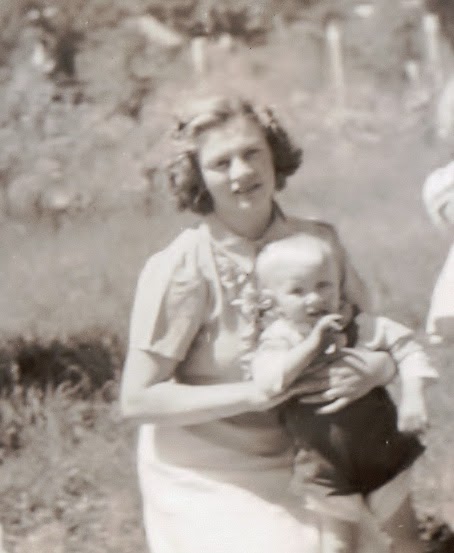In 1656, Jane was back in court and was required to put up a bond of 20 pounds. The evidence was heard by a group of three men, Brian Pendleton, Henry Sherburne, and Renald Fernald. I also descend from all three of these men.
On this day, Susannah Trimmings testified that "On Lord's Day 30th of March at night going home with Goodwife Barton, she seperated from her at the freshet next to her house. On her return between Goodman Evens' and Robert Davis' she heard a rustling in the woods, which she at first thought was occasioned by swine, and presently after, there did appear to
her a woman whom she apprehended to be old Goodwife Walford. She asked me where my consort was; I answered I had none. She said thy consort is at home by this time. Lend me a pound of cotton. I told her I had but two pounds in the house, and I would not spare any to my mother. She said I had better have done it; that my sorrow was great already, and it should be greater for I was going a great journey but should ne'er come there. She then left me, and I was struck as with a clap of fire on the back, and she vanished toward the water side in my apprehension in the shape of a cat. She had on her head a white linen hood tied under her chin and her waistcoat and petticoat were read, with an old green apron and a black hat upon her head. Taken upon oath, 18th April 1656 before Brian Pendleton, Henry Sherburne, Renald Fernald."
 Susannah's husband, Oliver Trimmings backed up her report by testifying that his wife had come home in a "sad condition" and "her back was as a flame of fire." She laid down her daughter and sat down, but she could not talk. When she finally caught her breath she said, "Lord have mercy upon me, this wicked woman would kill me." He also said she complained of numbness in her lower extremities and could not feel it when he pinched her there. Another witness, Elisa Barton said that Susannah's face was spotted and her eyes "looked as if they had been scalded."
Susannah's husband, Oliver Trimmings backed up her report by testifying that his wife had come home in a "sad condition" and "her back was as a flame of fire." She laid down her daughter and sat down, but she could not talk. When she finally caught her breath she said, "Lord have mercy upon me, this wicked woman would kill me." He also said she complained of numbness in her lower extremities and could not feel it when he pinched her there. Another witness, Elisa Barton said that Susannah's face was spotted and her eyes "looked as if they had been scalded."An unnamed witness came forward and stated that it could not have been Jane Walford because she had been at home, acting normally, at the time of Susannah Trimmings' incident.
Another witness against Jane Walford was Nicholas Rowe, who saw her as an apparition. He said she "came to the deponent in the evening and put her hand upon his breast so that he could not speak and was in great pain until the next day. By the light of the fire in the next room, it appeared to be Goody Walford but she did not speak."
 In 1669, Jane sued Robert Couch, a doctor, for calling her a witch and saying he could prove it. She was awarded 5 pounds in damages.
In 1669, Jane sued Robert Couch, a doctor, for calling her a witch and saying he could prove it. She was awarded 5 pounds in damages. Thomas Walford - husband of Jane, the accused
Jane Walford
Martha Peverly
Christopher Noble
Mary Noble
Sarah Rand
Lydia Rand
Tryphenia Lunt
John Henry Cotton
Francis Llewellyn Cotton
Ray Everett Cotton
Fern Lyndell Cotton - my grandmother
For More Information See:
The Devil in the Shape of a Woman: Witchcraft in Colonial New England by Carol F. Karlsen.
Witch-Hunting in Seventeenth-Century New England: A Documentary History 1638-1693, Second Edition by David D. Hall.
Brian Pendleton and His Descendants, 1599-1910, With Some Account of the Pembleton Families of Orange County, N.Y., Ostego County N.Y., and Luzerne County, Pa., and Notices of Other Pendletons of Later Origin in the United States, Everett Hall Pendleton, compiler.


























.gif)










